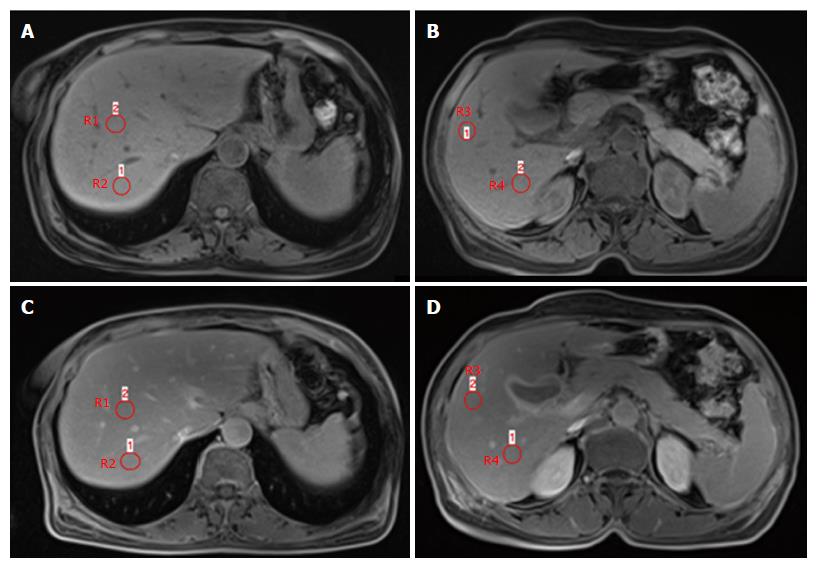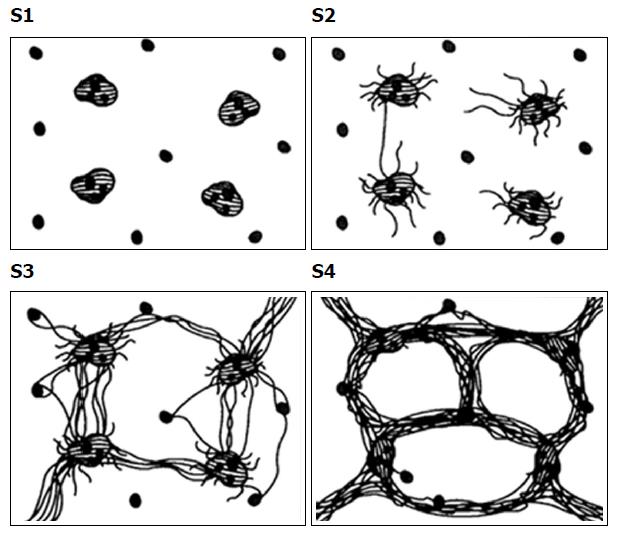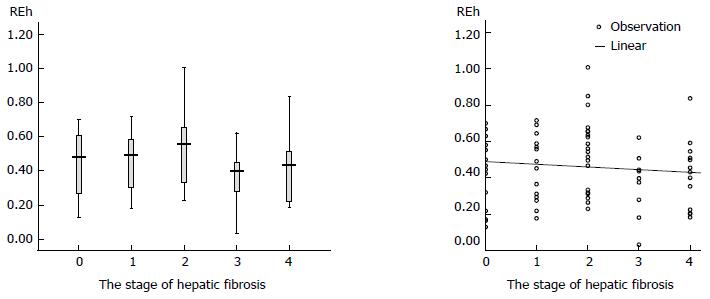Copyright
©The Author(s) 2017.
World J Gastroenterol. May 7, 2017; 23(17): 3133-3141
Published online May 7, 2017. doi: 10.3748/wjg.v23.i17.3133
Published online May 7, 2017. doi: 10.3748/wjg.v23.i17.3133
Figure 1 Transverse T1-vibe fat-suppressed (A and B) and T1-vibe fat-suppressed hepatocyte phase of Gd-BOPTA-enhanced magnetic resonance imaging (C and D) in a patient with S1 hepatic fibrosis.
SI pre = (R1 + R2 + R3 + R4)/4 in A and B; SI post = (R1 + R2 + R3 + R4)/4 in C and D; RE = (SI post-SI pre)/SI pre.
Figure 2 Schematic diagram of staging of hepatic fibrosis.
S1: Portal fibrosis characterized by mild fibrous expansion of portal tracts; S2: Periportal fibrosis showing fine strands of connective tissue in zone 1 with only rare portal-portal septa; S3: Septal fibrosis manifested by connective tissue bridges that link portal tracts with other portal tracts and central veins; minimally distorted architecture, but no regenerative nodules; S4: Cirrhosis showing bridging fibrosis and nodular regeneration.
Figure 3 Schematic diagram of grading of hepatitis.
G1: Minimal activity with mild portal inflammation but scant piecemeal necrosis; G2: Mild activity with mild portal inflammation, piecemeal necrosis, and scant lobular spotty necrosis; G3: Moderate activity with moderate portal inflammation and lobular spotty necrosis; G4: Severe activity with marked portal inflammation, brisk piecemeal necrosis, and areas of confluent necrosis resulting in bridging.
Figure 4 The correlation between relative enhancement ratio in the hepatocyte phase and the stage of hepatic fibrosis.
REh: Relative enhancement ratio in the hepatocyte phase.
Figure 5 The correlation between relative enhancement ratio in the hepatocyte phase and the grade of hepatitis.
REh: Relative enhancement ratio in the hepatocyte phase.
- Citation: Li XM, Chen Z, Xiao EH, Shang QL, Ma C. Diagnostic value of gadobenate dimeglumine-enhanced hepatocyte-phase magnetic resonance imaging in evaluating hepatic fibrosis and hepatitis. World J Gastroenterol 2017; 23(17): 3133-3141
- URL: https://www.wjgnet.com/1007-9327/full/v23/i17/3133.htm
- DOI: https://dx.doi.org/10.3748/wjg.v23.i17.3133













